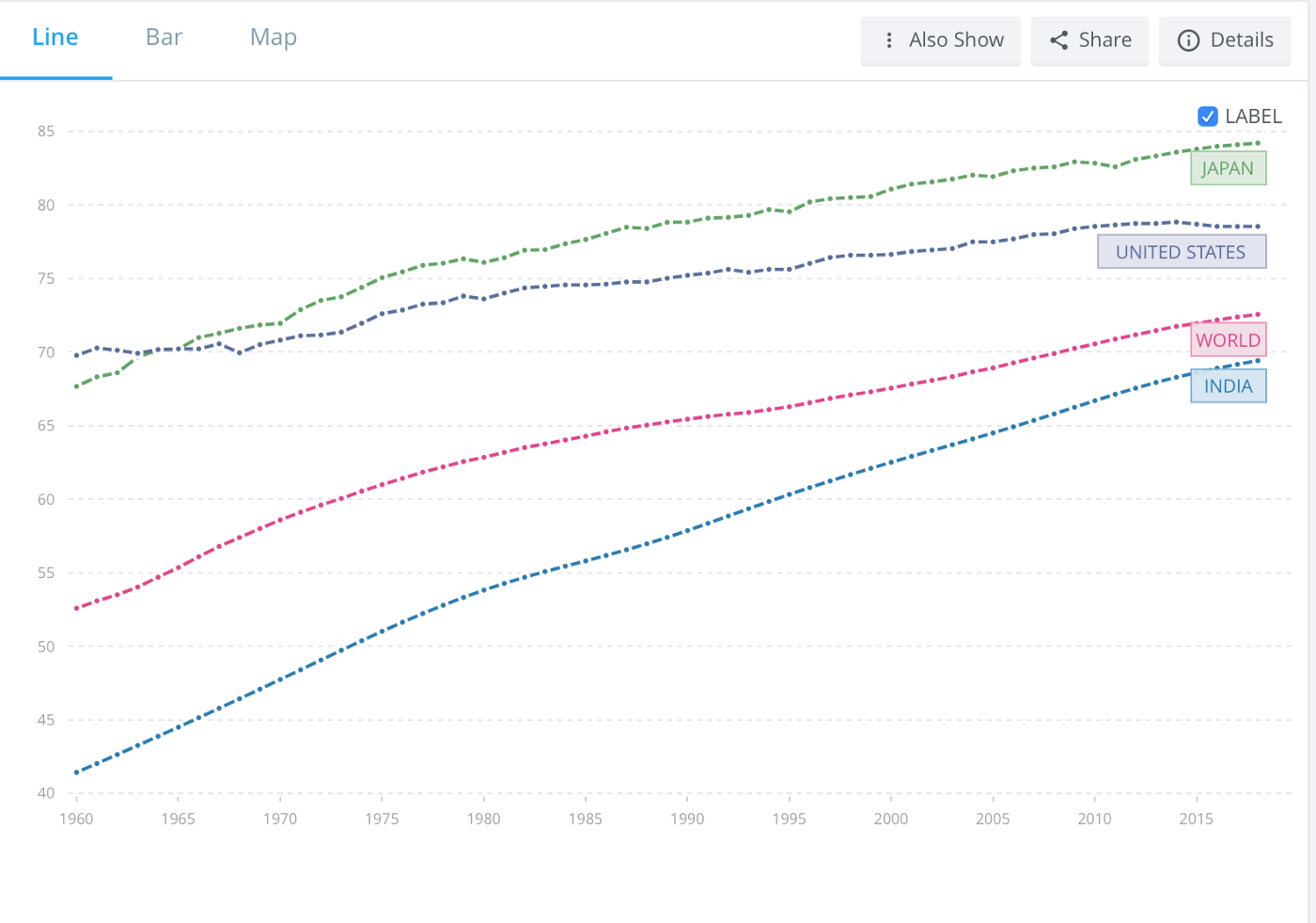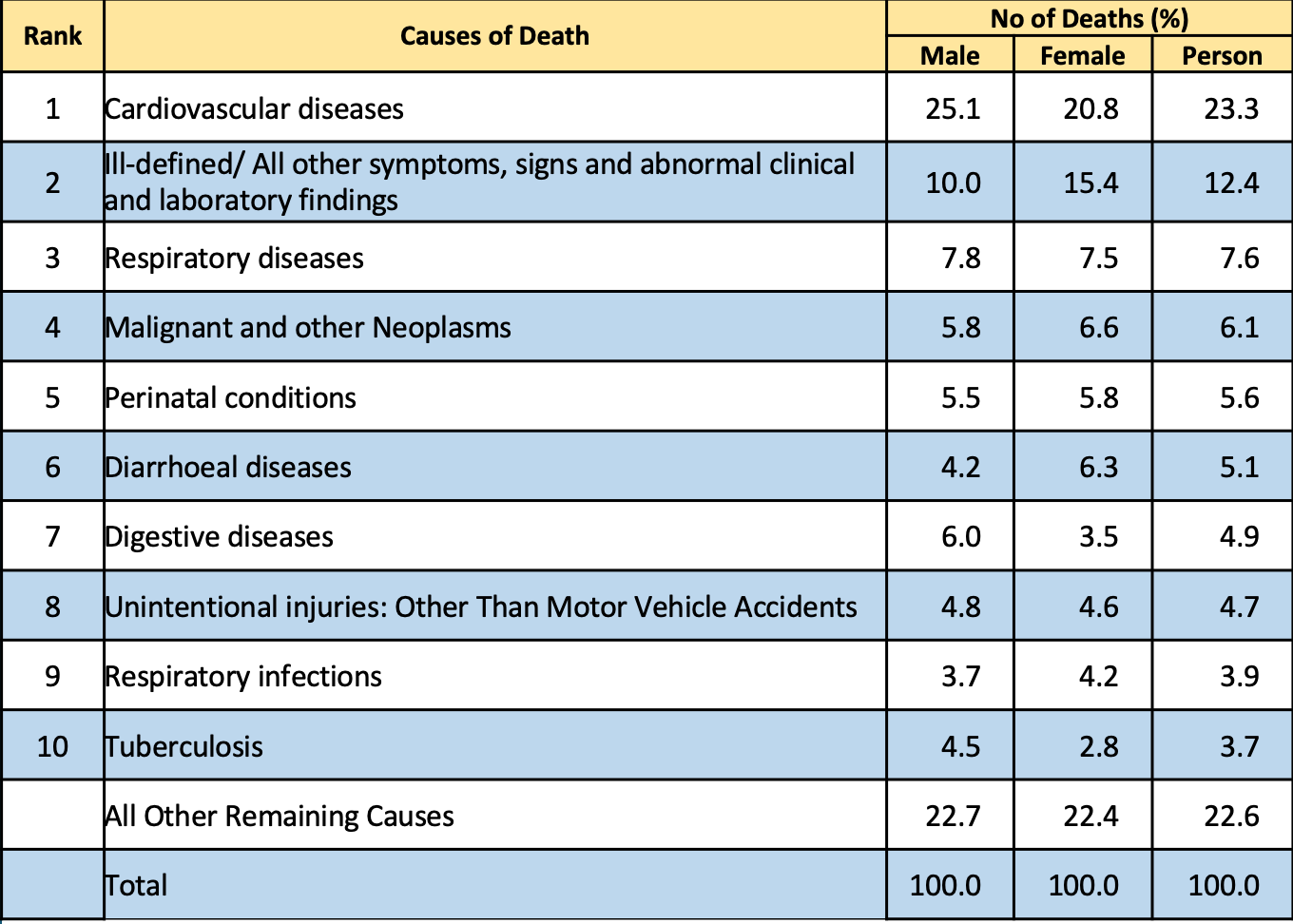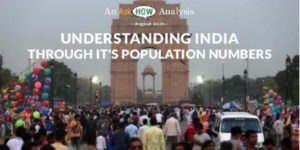Matters of Life and Death in Indiafeatured
This is the ninth post in a series on population in India. Each post can be read independently. The links for the first eight posts are at the bottom of this one.
How long would an Indian born today expect to live? How many Indians die every year? What are the leading causes of death in the country? The Covid-19 pandemic has focused our attention on death and I thought this would be a good time to answer these questions. This post is a part of a series on population in India. Let us begin with life expectancy.
How long can you expect to live?
How long you expect to live depends on how old you are. Life expectancy at birth is the expected life of a person born in a particular year in that year. The life expectancy of a person born in 2015 in India is 69 years.
This figure is an average. Unfortunately, many will (and have) die younger and that means that the life expectancy of those who live increases. For 2013–17, SRS estimated the mean life expectancy at age 10 as 71.8, at age 50, 75.8 and at age 70, 81.5.
Life expectancy has increased across the world in the last two centuries, it is believed that this increase was driven mainly by improvements in sanitation, housing, and education, causing a steady decline in early and mid-life mortality, which was chiefly due to infections. This trend continued with the development of vaccines and then antibiotics. India has also seen a near 75% increase in life expectancy since 1960.

As we will see later, many Indians still die from infectious diseases and I suspect that we are yet to see a significant impact of improved sanitation!
The life expectancy varies across states, with Kerala leading the way. In 2013–17, it had an expectancy of 75.2 while Uttar Pradesh was only 65.0. You can expect to live longer if you live in an urban area rather than rural, with the numbers being 72.4 and 67.7. Women are expected to live longer than men; 70.4 versus 67.8.
Now to the next question, how many people die each year?
How many die and why?
The Sample Registration System estimated the Crude Death rate (CDR) for the country at 6.2 in 2018. That is, there were 6.2 deaths for every 1000 people in the year. For a total population of 1.36 Billion, this comes to 8.4 Million deaths every year or 0.7 Million deaths every month. Incidentally, the CDR is much higher (more than 9) in more developed places like Europe, United States and Japan as their populations are significantly older. What do people die of in India?
India has a challenge in determining the cause of death. SRS estimates that only twenty percent of deaths are medically certified. I understand that even in the medically certified cases, the doctor may not be very precise in listing the cause of death. So how do we estimate the cause of death for the whole country?
SRS conducted ‘Verbal Autopsies (VA)’ on the deaths that occurred in its sample. This is a conversation with people close to the dead person in order to determine the cause of death. This method has its inexactness. There is also the impreciseness of the whole sampling process in general, and the results of SRS should be taken with a grain of salt. However, I do think that these results are indicative.

As can be seen, Cardiovascular diseases are the biggest killer in the country. In some sense, this is a good sign. It means that infectious diseases, which may kill more young people than Cardiovascular diseases, are not killing as many as they used to. The impact of infectious diseases is still very high though, and many of them may be contributing to other causes of death by the way of reduced immunity and general ill health.
Note the nearly 4% of deaths are from Tuberculosis. That would translate to roughly 3,00,000 deaths a year or 25,000 deaths a month. As I write this post at the end of June 2020, the deaths from Covid-19 are less than 15,000 in three months. Many people have used this comparison to say that Indians may be overestimating the danger of Covid-19. This topic requires a separate post by itself but I will mention one fact that many people miss in such discussions. The challenge of the covid-19 is that it spreads very fast. The serial interval, or the time between the symptoms of first patient and second patient is very short. For Covid-19 this is estimated to be around 4 days. The estimates of the median serial interval for TB vary from 0.57 to 1.65 years! [1].
Thus, even though the percentage of severe cases may be low in Covid-19, the total number of such cases becomes so high that it puts a huge load on hospitals. This is being seen in Mumbai and Delhi currently.
Summary
· The life expectancy at birth in India has been steadily increasing and is now nearly 70 years.
· About 84 Lakh people die in India every year.
· Cardio vascular diseases are the biggest killers in India and infectious diseases cause many deaths too.
Author –
Yogesh Upadhyaya
(Yogesh Upadhyaya is one of the founders of AskHow India. Blogs are personal views.)
You can follow AskHow India (@AskHowIndia) or me (@Uppi89) on twitter or me on LinkedIn
[1] I first came across the concept of Serial interval in this blog. Click through for a good description of difference between risk and uncertainty also.
This is the ninth in a series on population. The first eight articles can be found here
1. Everything you wanted to know about population (but were too lazy to Google).
2. Are the Acche Din of population growth already here?
3. Chhath — the new national festival?
4. Economic migration in India — The Who, the Why and other good stuff.
5. Islam and population growth in India.



